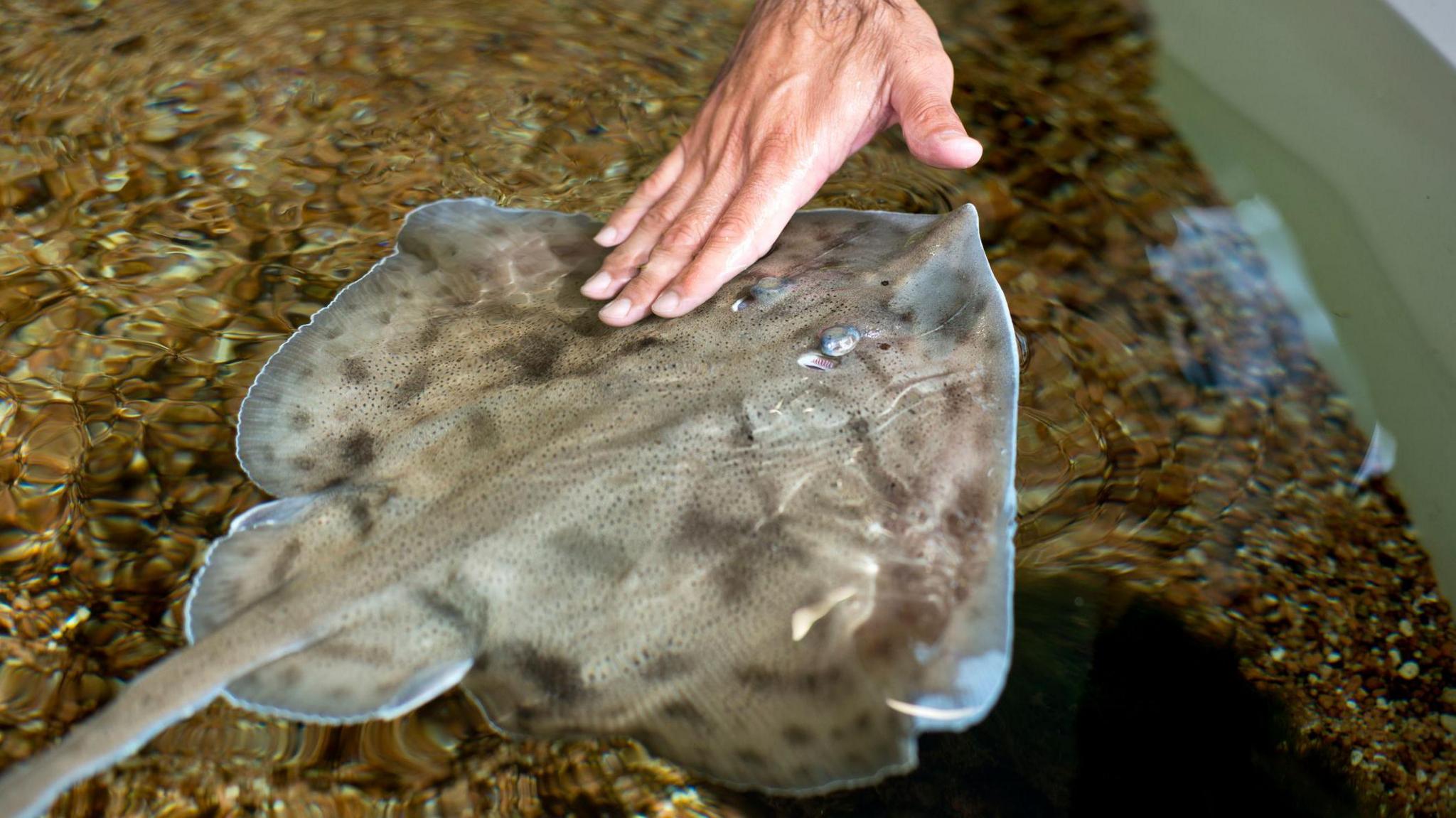Blue sharks can change colour, say scientists

- Published
Blue sharks get their name from being, well, blue! But did you know that's one of the rarest colours in the animal kingdom?
Scientists at the City University of Hong Kong looking at what makes this fish this colour found it's down to tiny nanostructures in their skin, which act as blue reflectors.
Other structures also absorb other types of light - which help to produce the shark's characteristic colour. But not only that, the sharks' skin can change colour too.
The team say a multi-functional design like this "as far as we know, hasn't been seen before". Read on for more.
More like this
Reindeer eyes change colour with the seasons
- Published16 December 2023
Scientists create colour-changing 'octopus' ink
- Published23 May 2023
Scientists create a robot chameleon that changes colour!
- Published16 August 2021

The research shows the secret to the blue shark's colour lies in the tooth-like scales on its skin.
The guanine crystals act as blue reflectors while another structure, called melanosomes, absorb other wavelengths of colour.
Professor Dean from the City University of Hong Kong said: "These components are packed into separate cells, reminiscent of bags filled with mirrors and bags with black absorbers, but kept in close association so they work together.
"When you combine these materials together, you also create a powerful ability to produce and change colour."

The researchers had to look at a shark's fin really closely under lots of powerful microscopes.
They used simulations on a computer to recreate and understand the structures under different circumstances.
Professor Dean continued: "Very fine scale alterations resulting from something as simple as humidity or water pressure changes could alter body colour, that then shape how the animal camouflages or counter-shades in its natural environment."
The research suggests even something as simple as swimming deeper in the ocean could make the sharks look a deeper colour of blue as the guanine crystals are forced closer together with the increased pressure from the water.
More animal stories
- Published24 May

- Published16 June

- Published9 May

